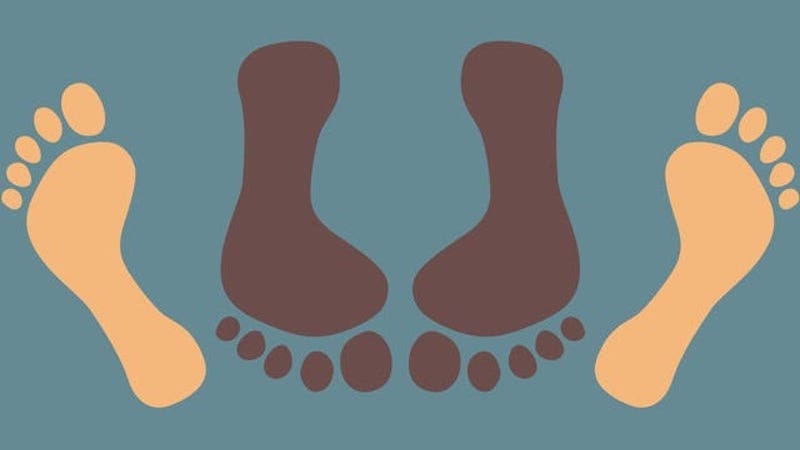The missionary position is a trauma response
- 15 August 2024
- Posted by: Michael H Hallett
- Category: Generational trauma , Patriarchy , Sexuality ,

In Sex in patriarchy – how the past shapes sex today I describe the ‘3 M’s’—married, monogamous, missionary (position)—as the bedrock of modern sexuality. At the time, I attributed the prevalence of the third ‘M’ to the rise of patriarchy:
“It is obviously a masculine-dominant position… Patriarchy was originally about the survival of the most violent. The lure of sexual access to the enemy’s women created an incentive for male violence. The missionary position is the rape position. It’s the position that gives the (usually) physically weaker woman the least wriggle room.”
I can now articulate the ubiquity of the missionary position more accurately: it’s an unconscious trauma response, when fight or flight turns to freeze.
Let’s dig a little deeper.
What is the missionary position?
Firstly, the elephant in the bedroom: where does the name come from?
According to Wikipedia, it reputedly arose from English-speaking Christian missionaries encouraging converts to use this position. It also possibly came into vogue following the publication of Alfred Kinsey’s seminal Sexual Behaviour in the Human Male (1948).
Wikipedia:
“The missionary position or man-on-top position is a sex position in which, generally, a woman lies on her back and spreads her legs, and a man lies on top of her while they face each other…
The missionary position is the most common sex position [though] ancient art shows missionary as being less popular than woman-on-top positions in Ur, Greece, Rome, Peru, India, China and Japan.”
The Trobriand Islanders
And, we might add, Melanesia (which extends from New Guinea to Fiji off the north-eastern coast of Australia). Polish-British anthropologist Bronisław Malinowski spent some time living among the Trobriand Islanders. In The Sexual Life of Savages in North-Western Melanesia (1929) he writes:
“The natives regard the squatting position as more advantageous, both because the man is freer to move than when kneeling, and because the woman is less hampered in her responsive movements.”
In The Invasion of Compulsory Sex-Morality (1932), early psychoanalyst Wilhelm Reich corroborates the Trobriand view with observations from his own clinical practice:
“The majority of [European] women are incapable of carrying out the particular rhythmic pelvic movements in the embrace that lead up to their own orgasm and heighten the gratification of the man.”
In The Function of the Orgasm (1942) Reich attributes this to a frozen pelvis, which is accompanied by feelings of emptiness, weakness, and numbness: “The women lie motionless… The immobility of the pelvis creates the impression of deadness.”
Physical and emotional deadness, in combination, are clear signs of trauma.
Fight, flight, and freeze
The trauma stems from a malfunction of the fight-or-flight response that became embedded in the human psyche some 6,000 years ago, paving the way for patriarchy, which has been passed down through epigenetic inheritance ever since.
First demonstrated by physiologist Walter Bradford Cannon in 1915, the fight-or-flight response is our body’s way of protecting us from physical and emotional danger. It does this by releasing adrenaline into the endocrine system—a messenger loop connecting critical glands—which agitates us into, well, either fight or flight.
Mammals are incredibly sensitive to adrenaline. One part adrenaline in 1.4 billion parts blood will raise the heartbeat of a cat.
The problem comes when neither fight nor flight are possible. Then a third response, freeze, occurs. Our body keeps producing adrenaline because the danger hasn’t gone away, instead of the cortisol that neutralises the adrenaline. Result: we go into a state of low-grade paralysis, unable to think, feel, or act decisively.
Animals illustrate this behaviour. Rick Gore at thinklikeahorse.org writes:
“A horse will sometimes freeze in bright light since it blinds them due to their extremely sensitive night vision ability. When a prey animal is blinded, they do not know if they are moving into danger or out of danger, so they will freeze.”
Playing dead
In patriarchal societies, where everything feminine—particularly sexuality—is shamed, sex is socially dangerous even within the confines of a legally sanctioned relationship. At a conscious level we may not feel this, but six millennia of persecution, shame, rage, suppression and repression have conditioned us to believe sex is still edgy.
In The Blank Slate: The Modern Denial of Human Nature, Evolutionary psychologist Steven Pinker writes that, “In all societies, sex is at least somewhat ‘dirty’.”
This patina of filth is the sour taste of trauma alerting us to social danger.
The missionary position is, quite literally, ‘playing dead.’ The woman goes limp and waits for the man to follow. In patriarchy, that often doesn’t take long due to the prevalence of premature ejaculation, which is how many men cope with sexual shame.
Next steps
For further resources on sexuality, both free and paid, please click on this image.

